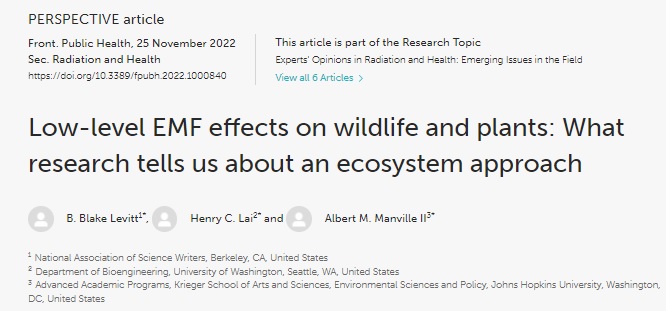
There is enough evidence to indicate we may be damaging non-human species at ecosystem and biosphere levels across all taxa from rising background levels of anthropogenic non-ionizing electromagnetic fields (EMF) from 0 Hz to 300 GHz. The focus of this Perspective paper is on the unique physiology of non-human species, their extraordinary sensitivity to both natural and anthropogenic EMF, and the likelihood that artificial EMF in the static, extremely low frequency (ELF) and radiofrequency (RF) ranges of the non-ionizing electromagnetic spectrum are capable at very low intensities of adversely affecting both fauna and flora in all species studied. Any existing exposure standards are for humans only; wildlife is unprotected, including within the safety margins of existing guidelines, which are inappropriate for trans-species sensitivities and different non-human physiology. Mechanistic, genotoxic, and potential ecosystem effects are discussed.
https://www.frontiersin.org/articles/10.3389/fpubh.2022.1000840/full
